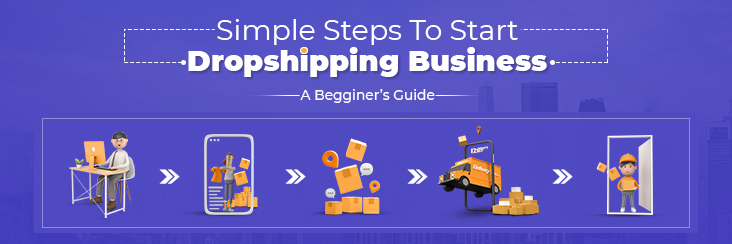Dropshipping is a popular way to start an online business. It’s a great choice for beginners.
Ever thought about running an online store without stocking products? Dropshipping allows you to sell items directly from suppliers to customers. It’s simple. You don’t need to invest in inventory or worry about shipping logistics. This low-risk model is perfect for new entrepreneurs with limited funds.
Whether you’re looking to earn extra income or build a full-fledged business, dropshipping offers a flexible and accessible entry point. Get ready to dive into the basics of dropshipping and learn how to start your own online store with ease.

Credit: kr.pinterest.com
Introduction To Dropshipping
Dropshipping is a popular business model for new entrepreneurs. It allows you to start an online store without holding inventory. This guide will help you understand the basics of dropshipping.
What Is Dropshipping?
Dropshipping is a retail fulfillment method. Instead of keeping products in stock, the seller purchases items from a third party. These items are then shipped directly to the customer. As a result, the seller never sees or handles the product.
This model is attractive for many reasons. It requires less capital. You don’t need to invest in inventory upfront. It is also flexible. You can run a dropshipping business from anywhere with an internet connection.
How Dropshipping Works
The dropshipping process involves several steps. Below is a simple breakdown:
- The customer places an order on your online store.
- You forward the order to your supplier.
- Your supplier prepares and ships the order directly to the customer.
To better understand, here’s a table summarizing the process:
| Step | Description |
|---|---|
| Order Placement | Customer buys a product from your store. |
| Order Forwarding | You send the order details to your supplier. |
| Order Fulfillment | Supplier ships the product to the customer. |
The dropshipping model removes many traditional retail barriers. You do not need to worry about warehousing or shipping. This makes it easier for beginners to start an e-commerce business.

Credit: www.youtube.com
Pros And Cons
Starting a dropshipping business is appealing due to its simplicity. Yet, it’s essential to understand both its advantages and challenges. Here, we will explore the pros and cons of dropshipping, helping you make an informed decision.
Advantages Of Dropshipping
Dropshipping offers several benefits, especially for beginners. Here are some key advantages:
- Low Startup Costs: You don’t need to invest in inventory upfront. This reduces initial costs significantly.
- Easy to Start: Setting up a dropshipping business is straightforward. You don’t need much technical knowledge.
- Wide Product Selection: You can offer a broad range of products without worrying about storage space.
- No Inventory Management: Suppliers handle inventory and shipping. This frees up your time to focus on marketing and customer service.
- Flexible Location: You can run your dropshipping business from anywhere. All you need is an internet connection.
Challenges Of Dropshipping
While dropshipping has many benefits, there are also some challenges to consider:
- Low Profit Margins: Competition can drive down prices. This may result in lower profit margins.
- Inventory Issues: Suppliers might run out of stock. This can lead to delays and unhappy customers.
- Shipping Complexities: Handling multiple suppliers can complicate shipping. Different suppliers may have different shipping times and costs.
- Limited Control: You rely on suppliers for product quality and shipping. This can affect your brand’s reputation.
- Customer Service Challenges: Dealing with returns and complaints can be tricky. You may have to coordinate with suppliers to resolve issues.
Understanding these pros and cons helps in making the right decision. By weighing the advantages and challenges, you can better prepare for your dropshipping journey.
Choosing A Niche
Choosing a niche is a crucial step in starting a dropshipping business. Your niche determines your target audience and the products you will sell. Selecting the right niche can set you up for success. It helps you focus on specific customer needs and preferences.
Finding Profitable Niches
Begin by brainstorming ideas for niches that interest you. Passion can drive motivation. It can also help you understand the market better. Research trending products and industries. Look for gaps where you can offer something unique. Use tools like Google Trends to see what people search for most. Check social media platforms and forums to find out what people talk about.
Evaluating Market Demand
Once you have a list of potential niches, evaluate their demand. Use keyword research tools to check search volume. High search volume indicates strong interest. Look at your competition. Too much competition can make it hard to stand out. Consider niches with moderate competition. Check online marketplaces like Amazon and eBay. See how well products in your niche sell. Read customer reviews to understand their pain points and needs.
Market demand analysis helps you choose a niche with potential for profit. It ensures there is a market ready to buy your products.
Selecting Suppliers
Choosing the right suppliers is crucial for your dropshipping business. The success of your store depends on reliable suppliers. They ensure your customers get quality products on time. This section will help you select the best suppliers for your business.
Identifying Reliable Suppliers
Finding trustworthy suppliers can seem challenging. Start by researching online directories. Websites like Alibaba and AliExpress have many suppliers. Check customer reviews and ratings. Look for suppliers with high ratings and positive feedback. This can indicate their reliability.
Another way is to join dropshipping forums and groups. Experienced sellers often share their supplier experiences. Their insights can help you avoid unreliable suppliers. Also, consider testing the suppliers. Order sample products. Evaluate their quality and shipping time. This gives you firsthand experience with the supplier.
Building Supplier Relationships
Good relationships with suppliers are vital. Start by communicating clearly and respectfully. Ask questions about their products and policies. Show that you are serious about your business. This can lead to better cooperation.
Stay in touch regularly. Update them about your needs and any issues. Prompt communication can solve problems quickly. It also shows your commitment. Consider placing regular orders. Consistent business can build trust and reliability. A strong relationship can lead to better deals and priority service.
Setting Up An Online Store
Setting up an online store is a crucial step in dropshipping. It is where customers will browse and purchase your products. A well-designed store can attract and retain customers, boosting your sales.
Choosing An E-commerce Platform
Choosing the right e-commerce platform is essential. Popular options include LaunchMyStore, Shopify, WooCommerce, and BigCommerce. Each platform has its own features and benefits. LaunchMyStore is known for its user-friendly interface. WooCommerce is great for those who prefer using WordPress. BigCommerce offers robust tools for scaling your store. Consider your needs and budget before making a decision.
Designing Your Store
Designing your store is the next important step. A clean and professional design builds trust. Choose a theme that matches your brand. Ensure your site is easy to navigate. Use high-quality images for your products. Write clear and concise product descriptions. Optimize your store for mobile devices. A mobile-friendly site can increase your sales. Remember, a good design enhances user experience.
Marketing Strategies
Starting a dropshipping business can be exciting yet challenging. One of the key elements to succeed is having effective marketing strategies. This section explores two important approaches: Social Media Marketing and Content Marketing.
Social Media Marketing
Social media platforms are powerful tools for promoting your dropshipping business. They help you reach a broad audience and engage with potential customers.
- Facebook: Create a business page and share product posts, promotions, and updates.
- Instagram: Use high-quality images and stories to showcase your products.
- Twitter: Tweet about new arrivals, sales, and interact with your followers.
Paid ads on these platforms can also boost your visibility. Target specific demographics to reach the right audience.
Don’t forget to interact with your followers. Respond to comments, messages, and reviews to build a loyal community.
Content Marketing
Content marketing involves creating valuable content to attract and engage your audience. This can be in the form of blog posts, videos, or infographics.
- Blog Posts: Write articles related to your niche. Answer common questions and provide useful tips.
- Videos: Create product reviews, unboxing videos, or tutorials. Post them on YouTube or your website.
- Infographics: Design visually appealing infographics to explain complex information simply.
Regularly updating your content keeps your audience engaged and improves your SEO ranking. This helps potential customers find your site through search engines.
Both social media and content marketing are essential for a successful dropshipping business. They help you connect with customers and build a strong online presence.
Managing Orders And Inventory
Managing orders and inventory is crucial for a successful dropshipping business. Efficient processes ensure customer satisfaction and smooth operations. Let’s delve into the key aspects of managing orders and inventory.
Order Fulfillment Process
Order fulfillment starts the moment a customer places an order. You must notify the supplier quickly. This step is vital to avoid delays. Communicate clearly with your supplier. Provide accurate order details to prevent mistakes.
Once the supplier ships the product, update your customer. Share tracking information. This keeps customers informed and builds trust. Ensure you monitor the shipping process. Address any issues promptly.
Inventory Management Tips
Effective inventory management keeps your business running smoothly. Use inventory management tools. These tools help you track stock levels. They alert you when stock is low.
Regularly update your product listings. Remove out-of-stock items. This prevents disappointing customers. Maintain good relationships with your suppliers. Reliable suppliers ensure a steady stock flow.
Analyze sales trends. This helps you anticipate demand. Stock up on high-demand items. Avoid overstocking low-demand products. This strategy optimizes your inventory and reduces costs.

Credit: dodropshipping.com
Customer Service Tips
Customer service is crucial in dropshipping. It helps build trust and loyalty. A positive experience can turn first-time buyers into repeat customers. Below are some tips to help you provide excellent customer service.
Handling Customer Inquiries
Respond quickly to customer inquiries. Quick responses show that you value your customers. Use a friendly and professional tone. Address customers by their name to make it personal. Provide clear and concise answers to their questions.
Use templates for common questions to save time. But, customize the message to avoid sounding robotic. Always thank customers for reaching out. This simple gesture can make a big difference.
Managing Returns And Refunds
Have a clear return and refund policy. Make sure it is easy to understand. Display it prominently on your website. This builds trust and sets clear expectations.
Handle returns and refunds quickly. Apologize for any inconvenience caused. Provide instructions on how to return the item. Process refunds as soon as possible. Keep customers informed during the process.
Offer solutions like exchanges or store credits. This can help retain customers. Happy customers are more likely to shop again.
Scaling Your Business
As your dropshipping business grows, scaling becomes essential. It’s the phase where you turn your small venture into a profitable enterprise. This section will guide you through key steps like automating processes and expanding your product range.
Automating Processes
Automation can save you time and reduce human error. Here are some steps to consider:
- Order Processing: Use tools that automatically forward orders to suppliers.
- Inventory Management: Automate stock updates to avoid selling out-of-stock items.
- Customer Service: Implement chatbots for immediate customer support.
Automation tools like Oberlo and Zapier can integrate various processes. These tools can handle repetitive tasks, freeing you to focus on growth.
Expanding Product Range
Diversifying your product range can attract more customers. Consider the following steps:
- Market Research: Identify trending products in your niche.
- Supplier Relationships: Build strong relationships with multiple suppliers to ensure product variety.
- Customer Feedback: Use feedback to identify gaps in your product range.
A broader range offers more options to your customers. It also helps in retaining customers who may otherwise look elsewhere.
Here’s a simple table summarizing these steps:
| Step | Description |
|---|---|
| Market Research | Identify trending products in your niche |
| Supplier Relationships | Build strong relationships with multiple suppliers |
| Customer Feedback | Use feedback to identify product gaps |
Expanding your product range can lead to increased sales. More products mean more opportunities for your business to grow.
Frequently Asked Questions
What Is Dropshipping?
Dropshipping is a retail method where a store doesn’t keep products. Instead, it buys from a third party.
How Does Dropshipping Work?
You sell a product. The supplier sends it directly to your customer. You never handle the product.
What Are The Benefits Of Dropshipping?
Low startup cost. No inventory. Easy to start. Flexible location. Wide product selection.
Is Dropshipping Profitable?
Yes, it can be. Success depends on choosing the right products and suppliers. Good marketing helps too.
What Are The Risks Of Dropshipping?
Low profit margins. Inventory issues. Shipping complexities. Quality control problems. Customer service challenges.
How To Choose A Dropshipping Supplier?
Research suppliers. Check reviews. Test their products. Ensure reliable shipping. Establish good communication.
Conclusion
Starting your dropshipping journey can be simple and rewarding. Focus on choosing reliable suppliers. Keep an eye on trends and update your inventory. Offer great customer service to build trust. Use social media to promote your products. Stay patient and learn from each experience.
Remember, success takes time and effort. With dedication and the right strategy, your dropshipping business can thrive. Happy selling!


